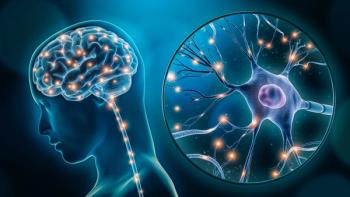
Suicide Risk Screening for Children With Neurodevelopmental Disabilities: New Insights
Key Takeaways
- Youth suicide rates are alarmingly high, with suicide being a leading cause of death among young people, exacerbated by the COVID-19 pandemic.
- Children with neurodevelopmental disorders face increased suicide risk but are often excluded from standard screening protocols, necessitating inclusive approaches.
Youth with neurodevelopmental disorders face significant suicide risks.
On April 5, 2025, I was honored to give my presentation entitled “Screening for Suicide Risk Among Children with Neurodevelopmental Disabilities” at the Anxiety and Depression Association of American conference in Las Vegas, Nevada.
The initial focus of the talk was on the mental health crisis currently impacting youth in the United States. Rates of youth suicide reflect this crisis: suicide is the leading cause of death for youth aged 10 to 14 years and the 3rd leading cause of death for 14 to 24 year olds after unintentional injuries and homicide.1 As a result, leading pediatric organizations, including the American Academy of Pediatrics (AAP), the American Association of Child and Adolescent Psychiatry, and the Children’s Hospital Association, declared a pediatric mental health crisis during the COVID-19 pandemic.2 The United States Surgeon General also called out this crisis in 2021.3
Further evidence supporting the ongoing crisis is found in the Center for Disease Control and Prevention’s Youth Behavior Risk Survey System (YRBSS). In 2023, the YRBSS revealed that 20% of high school students seriously considered suicide, 16% planned for suicide, 9% attempted suicide, and 2% were injured in a suicide attempt. Of note, female and LGBTQ+ students were disproportionately affected.4
To address the rising rates of youth suicide, the AAP partnered with the American Foundation for Suicide Prevention to generate a guide of best practices for suicide prevention in the “Blueprint for Youth Suicide Prevention.” Part of those recommendations include universal suicide risk screening for children aged 12 and up and screening for kids aged 8 to 11 years when clinically indicated.5 However, it is important to note that youth with neurodevelopmental disorders (NDD) are often systematically excluded from suicide risk screening protocols, despite clear evidence that they are at risk.
Studies show that children with intellectual disabilities are 2.8 to 4.5 times more likely to have psychiatric comorbidities, and up to 42% of children with NDD report suicidal thoughts and behaviors. Youth with autism, particularly those without intellectual disabilities, face an elevated risk of suicide-related mortality. Factors such as depression, posttraumatic stress disorder, and the stress of camouflaging autistic traits contribute to this vulnerability.7-11
Additionally, diagnostic overshadowing (the tendency to attribute all symptoms to a primary diagnosis) often impacts recognition of suicide risk. This is especially dangerous for nonverbal youth or those with communication challenges.12
To address this, my team implemented a universal suicide risk screening program at Kennedy Krieger Institute in Baltimore, Maryland. Kennedy Krieger is a health care organization, affiliated with Johns Hopkins University School of Medicine, that focuses on diseases, disorders, and impairments of the nervous system.
In 2017, universal suicide risk screening was implemented for all patients aged 8 and older using the Ask Suicide-Screening Questions (ASQ) tool during routine medical outpatient visits. Nurses administered the ASQ, and positive screens triggered further assessment by clinicians or mental health professionals. In the first 6-month period of implementation, 3854 screenings were completed out of 5260 eligible visits, with a 10.3% overall positive rate. Notably, one autism clinic had a 12.7% positivity rate, underscoring the importance of including this group in screening efforts.13
A follow up study of almost 15,500 patients evaluated ASQ screenings rates for first visits to the Institute for children aged 8 to 17 years. Although 29% of patients or their caregivers declined participation in screening, the overall rate of positive screens was 10.3%. In medical clinics, the rate was 7.9%, while behavioral health and autism clinics demonstrated a rate of 12.2% and 12.7%, respectively. Importantly, children as young as 8 years of age screened positive for suicide risk, demonstrating the importance of asking about suicide risk in young children.14
There is ongoing research into suicide risk for youth with autism or other neurodevelopmental disorders. A collaboration between the National Institute of Health, Kennedy Krieger Institute, and Nationwide Children’s Hospital with funding from the American Foundation for Suicide Prevention is exploring the validity of the ASQ in this patient population. Outcomes from that study are expected soon.
In conclusion, we advocate treating youth with NDD like all other children when it comes to suicide prevention. Screening is not only feasible but essential, even for children as young as 8 and those with neurodevelopmental disorders. This work underscores the need for inclusive, evidence based approaches to protect some of the most vulnerable members of our communities.
Dr Rybczynski is the chief medical officer at East Tennessee Children’s Hospital in Knoxville, Tennessee. She is chair of the Department of Pediatrics and an associate professor at the University of Tennessee Health Sciences Center Graduate School of Medicine in Knoxville, Tennessee.
References
1. Curtin SC, Tejada-Vera B, Bastian BA. Deaths: leading causes for 2020. Natl Vital Stat Rep. 2023;72(13):1-115.
2. AAP-AACAP-CHA Declaration of National Emergency in Child and Adolescent Mental Health. American Academy of Pediatrics. Updated October 19, 2021. Accessed July 21, 2025.
3. Protecting Youth Mental Health: U.S. Surgeon General’s Advisory. 2021. Accessed July 21, 2025.
4. YRBS Data Summary and Trends Report. Centers for Disease Control and Prevention. August 6, 2024. Accessed July 21, 2025.
5. Suicide: Blueprint for Youth Suicide Prevention. Accessed July 21, 2025. American Academy of Pediatrics.
6. Ludi E, Ballard ED, Greenbaum R, et al.
7. Storch EA, Sulkowski ML, Nadeau J, et al.
8. Vasa RA, Kalari VK, Kitchen CA, et al.
9. Hirvikoski T, Boman M, Chen Q, et al.
10. Segers M, Rawana J.
11. Austism & camouflaging. Embrace Autism. November 29, 2020. Accessed July 21, 2025.
12. Ashworth E, Bray L, Hanlon C, et al. 'Accumulating harm and waiting for crisis': Parents' perspectives of accessing Child and Adolescent Mental Health Services for their autistic child experiencing mental health difficulties. Autism. 2025;29(8):2111-2122.
13. Rybczynski S, Ryan TC, Wilcox HC, et al.
14. Rybczynski S, Gornik A, Schindel BJ, et al.
Newsletter
Receive trusted psychiatric news, expert analysis, and clinical insights — subscribe today to support your practice and your patients.

















